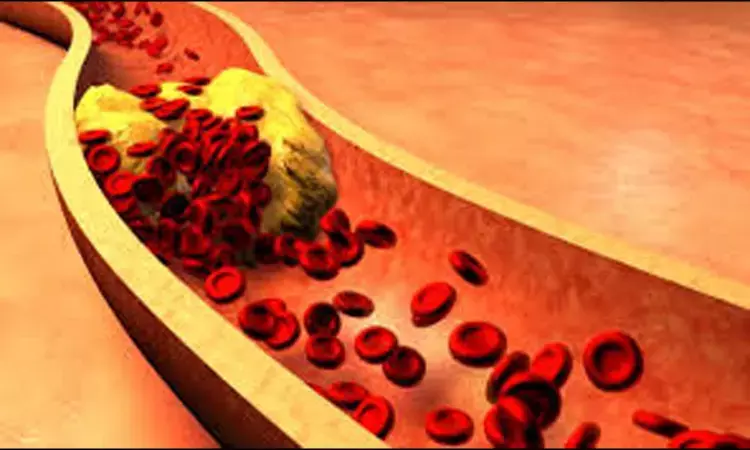- Home
- Medical news & Guidelines
- Anesthesiology
- Cardiology and CTVS
- Critical Care
- Dentistry
- Dermatology
- Diabetes and Endocrinology
- ENT
- Gastroenterology
- Medicine
- Nephrology
- Neurology
- Obstretics-Gynaecology
- Oncology
- Ophthalmology
- Orthopaedics
- Pediatrics-Neonatology
- Psychiatry
- Pulmonology
- Radiology
- Surgery
- Urology
- Laboratory Medicine
- Diet
- Nursing
- Paramedical
- Physiotherapy
- Health news
- Fact Check
- Bone Health Fact Check
- Brain Health Fact Check
- Cancer Related Fact Check
- Child Care Fact Check
- Dental and oral health fact check
- Diabetes and metabolic health fact check
- Diet and Nutrition Fact Check
- Eye and ENT Care Fact Check
- Fitness fact check
- Gut health fact check
- Heart health fact check
- Kidney health fact check
- Medical education fact check
- Men's health fact check
- Respiratory fact check
- Skin and hair care fact check
- Vaccine and Immunization fact check
- Women's health fact check
- AYUSH
- State News
- Andaman and Nicobar Islands
- Andhra Pradesh
- Arunachal Pradesh
- Assam
- Bihar
- Chandigarh
- Chattisgarh
- Dadra and Nagar Haveli
- Daman and Diu
- Delhi
- Goa
- Gujarat
- Haryana
- Himachal Pradesh
- Jammu & Kashmir
- Jharkhand
- Karnataka
- Kerala
- Ladakh
- Lakshadweep
- Madhya Pradesh
- Maharashtra
- Manipur
- Meghalaya
- Mizoram
- Nagaland
- Odisha
- Puducherry
- Punjab
- Rajasthan
- Sikkim
- Tamil Nadu
- Telangana
- Tripura
- Uttar Pradesh
- Uttrakhand
- West Bengal
- Medical Education
- Industry
TyG-BMI Index Predicts Higher Mortality Risk in Osteoporosis Patients: Study

Researchers have found in a new study that elevated triglyceride-glucose body mass index (TyG-BMI) levels have a strong correlation with higher risks of all-cause and cardiovascular mortality in osteoporotic patients, suggesting that insulin resistance plays an important part in their long-term outcome. Osteoporosis, a systemic skeletal disease characterized by decreased bone mass and fragility, is increasingly being seen as a disease with metabolic and cardiovascular determinants. The study was published in Frontiers in Endocrinology by Yuhao Li. and colleagues.
This prospective cohort consisted of 302 osteoporotic patients enrolled from 2018 to 2020 and followed up to 2024. A total of 64 all-cause deaths and 19 cardiovascular deaths were registered during follow-up. The association between TyG-BMI and mortality outcomes was assessed using restricted cubic spline and multivariable Cox proportional hazards regression analyses by researchers.
For enhancing the analysis, comparative evaluation was carried out with other IR-associated indices like TyG (triglyceride-glucose index), METS-IR (Metabolic Score for Insulin Resistance), and TG/HDL-C (triglyceride-to-high-density lipoprotein cholesterol ratio). Subgroup analysis was also carried out to determine patient subgroups at high risk, analyzing parameters like HDL levels, serum calcium, and creatinine levels.
Results
• The results indicated a strong positive correlation between TyG-BMI and all-cause and cardiovascular mortality in osteoporotic patients.
• For each 1-unit rise in TyG-BMI, the hazard ratio (HR) for all-cause death was 1.01 (95% CI: 1.00–1.02), proving a linear association.
• After quartile division of participants, those in Q4 had nearly 2.8-fold increased risk of all-cause mortality compared to Q1 (HR = 2.79, 95% CI: 1.16–6.73).
• The correlation with cardiovascular mortality was more significant—patients in Q4 demonstrated a 6.33-fold increased risk (HR = 6.33, 95% CI: 1.19–33.80) relative to Q1.
• Additionally, ROC curve analysis and DeLong tests revealed that TyG-BMI was more superior than other insulin resistance indicators (TyG, METS-IR, TG/HDL-C) in the prediction of both all-cause and cardiovascular death.
• Subgroup analyses revealed that cardiovascular death risk was especially high in patients with low HDL, high serum calcium, and elevated creatinine, indicating that metabolic and renal impairments can exacerbate the detrimental effects of IR in osteoporosis.
In conclusion, this prospective cohort study evidences TyG-BMI as being linearly and independently related to all-cause and cardiovascular mortality in osteoporotic patients. The results substantiated that insulin resistance is a key player in osteoporosis development and mortality, making TyG-BMI an important biomarker to determine patients at highest risk.
Reference:
Dr Riya Dave has completed dentistry from Gujarat University in 2022. She is a dentist and accomplished medical and scientific writer known for her commitment to bridging the gap between clinical expertise and accessible healthcare information. She has been actively involved in writing blogs related to health and wellness.
Dr Kamal Kant Kohli-MBBS, DTCD- a chest specialist with more than 30 years of practice and a flair for writing clinical articles, Dr Kamal Kant Kohli joined Medical Dialogues as a Chief Editor of Medical News. Besides writing articles, as an editor, he proofreads and verifies all the medical content published on Medical Dialogues including those coming from journals, studies,medical conferences,guidelines etc. Email: drkohli@medicaldialogues.in. Contact no. 011-43720751


